- VMware
- VMware vCenter Server (VCSA), VMware vSphere
- 22 November 2024 at 13:08 UTC
-

Storage vMotion (svmotion) available on VMware vSphere allows you to migrate the storage of a virtual machine from one datastore to another.
This has several advantages and is necessary in several cases.
Note that Storage vMotion (svmotion) will only migrate the storage and not the execution (CPU / RAM) of the virtual machine concerned as would be the case during vSphere vMotion.
- Possible migrations
- Why migrate virtual machine storage with Storage vMotion?
- How Storage vMotion (svmotion) works
1. Possible migrations
As you can see in the table below (provided by VMware), there are different types of migrations possible:
- Cold: migration of a cold virtual machine (VM turned off) from one host to another and/or from one databank to another.
- Suspended: migration of a virtual machine when it is paused (suspended).
- vSphere vMotion: migration of running a live virtual machine (VM powered on) from one host to another.
- vSphere Storage vMotion: live virtual machine storage migration from one datastore to another.
- Shared nothing vSphere vMotion: live virtual machine storage migration from one host to another and from one datastore to another without using shared storage.
Source : VMware virtual machine migration types vSphere 6.0 - VMware Communities.

2. Why migrate virtual machine storage with Storage vMotion?
Migrating a virtual machine's storage via Storage vMotion is useful, or even necessary, in several cases:
- Update your server or storage array (NAS/SAN) without having to interrupt the execution of your virtual machines.
You migrate all your virtual machines to another array and you can update the source array without having to interrupt some of your services. - Migrate a virtual machine from local storage to shared storage (or vice versa) or from shared storage to another shared storage.
For example, when creating a cluster. - Use a new version of the VMFS file system.
Indeed, it is not possible to update the VMFS 5 file system to VMFS 6.
You will therefore have to empty the databank in VMFS 5, to be able to delete it and recreate it with a VMFS 6 file system. - Migrate a virtual machine to newer and/or more efficient storage.
For example, migrating a virtual machine from a hard drive to an SSD drive, which will therefore be faster. - Distribute your virtual machines across your databanks to prevent one databank from being saturated while the other is empty. This can also improve storage performance by avoiding all I/O being performed on the same physical disk when another physical disk may never be.
- Rename the files of a virtual machine so that their name matches the new name of the virtual machine.
To do this, refer to our tutorial: Migrate VMs via vMotion to rename their files on VMware vSphere 6.7. - Change the provisioning type of a virtual hard disk.
This allows you to move from thin provisioning to static provisioning and vice versa.
To do this, refer to our tutorial: Migrate VMs via vMotion to change the type of provisioning of a virtual disk on VMware vSphere 6.7.
Sources :
3. How Storage vMotion (svmotion) works
When you live migrate a virtual machine from one datastore to another, several things happen:
- The migration process is initiated.
- Data is copied using the VMkernel Data Mover or via the "VAAI" API (vSphere Storage APIs for Array Integration) directly to your storage array (if applicable).
- A new virtual machine process is created in the VMkernel.
- The Mirror Driver allows you to synchronize the source and destination by performing input/output (I/O) on the source and destination datastores simultaneously.
So, if the virtual machine modifies part of the data that has already been transferred, the copy on the datastore will also be updated.
Additionally, if the migration fails, this means that the data will still be up to date on the source datastore as well. So nothing will be lost. - Once the virtual machine migration is complete, the destination virtual machine process will be used to use the data present on the datastore.
Note that using VAAI (vSphere Storage APIs for Array Integration) during a storage migration within a storage array (if it supports it) allows your VMware ESXi host to offload part of the migration process to your array.
This allows you to obtain better performance for the migration of your virtual machine and to use less of your host's resources for this migration.
Sources :
- VAAI Offload Failures & the role of the VMKernel Data Mover - VMware vSphere Blog
- VMware vSphere APIs: Array Integration (VAAI) - VMware

Share this tutorial
To see also
-
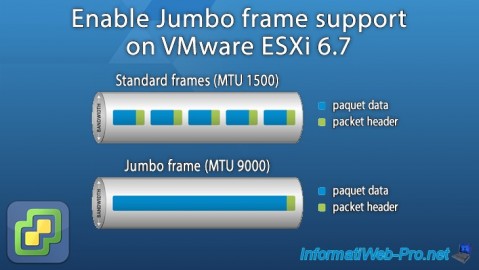
VMware 3/24/2023
VMware ESXi 6.7 - Enable Jumbo frame support
-
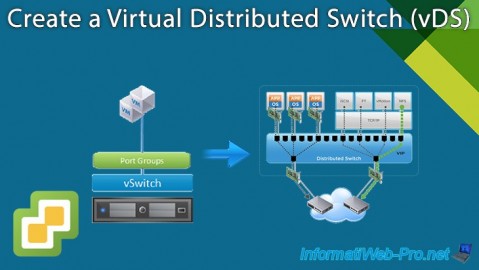
VMware 12/27/2024
VMware vSphere 6.7 - Create a Virtual Distributed Switch (vDS)
-
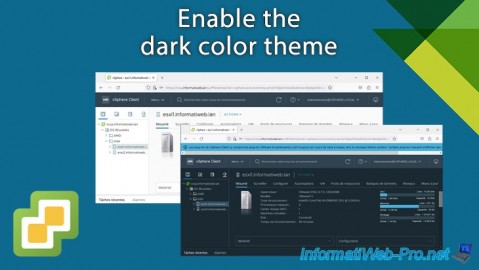
VMware 4/11/2024
VMware vSphere 6.7 - Enable the dark color theme
-
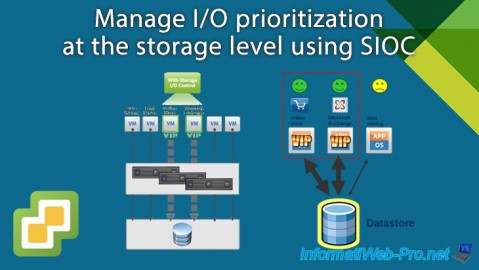
VMware 4/26/2024
VMware vSphere 6.7 - SIOC (Storage I/O Control)

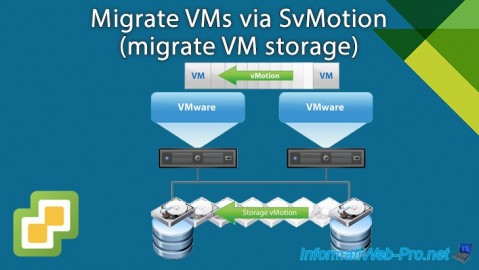
You must be logged in to post a comment